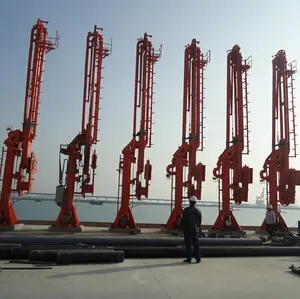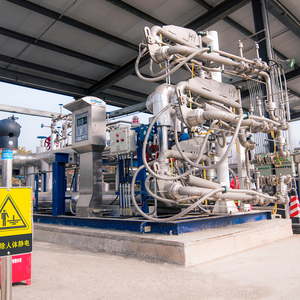(36 products available)










































































































































































With the boom in demand for transporting lng across regions, many companies are looking for better ways to perform safe and efficient lorry/vehicle and ship-to-port lng transfers. Among these, the lng loading arm has emerged as a star piece of equipment due to its ability to streamline the process.
Generally, there are three main types of lng loading arm.
When considering the specifications of the LNG loading arms, it is necessary to view them in connection with the overall unloading facility. Typical specifications of the arm parts include the following:
Length
The average length of LNG loading arms is 18 meters. Longer loading arms can create a greater angle of elevation and a higher level of flexibility. However, a greater length also causes greater weight and in some cases, longer sections can be folded or telescoped.
Weight
More lightweight arms are used for loading, while heavier ones are used for unloading. The usual weight for an LNG loading arm is around 1-2 tons excluding counterbalancing. The total weight is determined by the material used, the length, and the diameter of the arm.
Diameter
In most cases, the optimal diameter of an LNG loading arm is 300 mm. The bigger the diameter, the more gas can flow through the arm, but greater pressures and heavier weight are involved. Smaller diameters, such as 200 mm, can be used when the vessel size requires them.
Harsh Weather Conditions
At temperatures between -60° C and +50° C.
Some regular maintenance tasks for an LNG loading arm are listed below:
The main application of LNG loading arms is to load and offload liquefied natural gas at terminals and ports or to transfer LNG between vessels. But the use of LNG loading arms is not limited to this. With the right adaptations, these arms can also be utilized in the following scenarios.
When choosing the correct LNG loading arm, stakeholders will have to consider various essential features that will ensure operational efficiency, safety, and adaptability. Multipurpose ship-to-shore loading arms with flexible product-carrying systems and all-in-one solutions are gaining popularity; those who prefer the conventional must still evaluate the viability of the product under consideration.
Safety requirements can be non-negotiable or must-belong features when choosing an LNG loading arm. The safety measures embedded in the design of the arm must be taken into account, such as leak detection systems, emergency release mechanisms, and anti-slip features. The adaptability of the arms to diverse ship types and sizes, as well as their ability to accommodate fluctuations in the temperature and pressure of the cargo, is another essential characteristic to look at. It will facilitate frequent and efficient use, which will eventually lower operational costs.
When selecting an LNG loading arm for a specific application, pay attention to how well it matches the capacity, berth infrastructure, and vessel specifications. The design should allow for easy integration and should not disrupt the existing system. The propulsion system of the loading arm should be easy to use; consider whether the operation of the arms is manned or mediated by automated systems. The predictive and maintenance plans for the loading arm suggest that regular inspections must be taken into account in deciding the kind of arms to select. Because of the complexity of the instrument, it should possess features that help the predictive maintenance of the system. Finally, the cost of the instrument and the long-term expenses of operating it should be explored at the procurement stage so that there are no unwelcome surprises later on.
Q1: What are the trends in LNG loading arms? Q2: Will freelance LNG loading arms businesses surface?
A1: The global market for liquid natural gas (LNG) loading arms is projected to grow. The growth is attributed to the rising demand for clean energy. Innovation in technology is also expected to drive the growth of the market for LNG arms.
A study shows that the global market of LNG loading arms was $652.8 million in 2021. By 2031, it will have grown to $1.4 billion. This is about a CAGR 8.3% from 2022 to 2031. The growth will happen in the arms mostly used in the onshore sector. The onshore segment is projected to grow more than the offshore sector. This is because the onshore sector has many import terminals.
According to expert studies, the Asia Pacific region has many LNG import terminals. Therefore, it will lead the market. The growth will be led by countries like Japan, China and India. China alone is putting up more import terminals to meet industrial and domestic needs.
In the Asia Pacific, the import of LNG is rising. This is because countries are trying to reduce the use of coal to meet energy needs. The shift from coal to LNG has created demand for terminals and vessels that can import gas. This is boosting the market for LNG arms.
Q2: Will freelance LNG loading arms businesses surface?
Freelance business models may appear in small and medium-scale markets. This is because big investors control the market for LNG loading arms. The big investors have the funds to research innovation in the technology of loading arms.